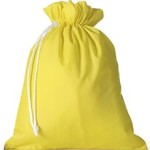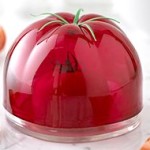Available these days are various gadgets that claim to save you money because they help to preserve fruit and veg for longer. Now when I use the term “gadget”, I do not mean some fancy bit of electronics, but rather a simple bit of plastic, cotton bag, or similar that is supposed to help preserve fruit and veg for longer.
Do they actually work or is it simply the latest scam?
I came across a Guardian Article where they proceeded to do a very practical thing, they tested the claims, gosh how skeptical of them. Should they not have simply “trusted” the seller that it performed as claimed? To which I can only reply …
Caveat emptor (Let the buyer beware).
So anyway, what did they test, and what did they discover? Here is the full article, and here below is a quick summary.
These did actually work
 Banana bag – A shiny yellow (of course) insulated drawstring bag that you use to store your bananas in. It kept them for about 1 week longer.
Banana bag – A shiny yellow (of course) insulated drawstring bag that you use to store your bananas in. It kept them for about 1 week longer.
Stayfresh bags – The idea is that the bags use Japanese stone powder suspended in polythene film to slow the natural ageing process by reducing moisture and hence stopping bacteria forming. Yep, it worked you get an extra week. 
Fridge food savers – small plastic products shaped like the food you want to preserve, for example half a tomato. It worked.
Food Hugger – stretchable silicone covers that prolong the life of cut produce by forming a seal around the cut end of a fruit or vegetable. – also worked.
These did not work
Ethylene-absorbing discs – Just a paper disc that looks rather like a beer mug mat. Claim is that fruit and vegetables emit ethylene gas as they ripen, which speeds up the rotting process, so the logic of these discs is that by absorbing this gas, the rate at which produce goes off can be sharply reduced. But when tested, it did not actually work.
“Ethylene absorbers have no real benefits at household level,” says Toine Timmermans, an expert on food sustainability at Wageningen University and Research Centre in the Netherlands, who is sceptical about the discs’ merits. “Ethylene is a hormone that triggers ripening when more than one part per billion is present. It can work at container level, but not on such a small scale.”
Mushroom preserving bag – a breathable polycotton bag with a “blackout layer” to restrict light. Nope, did not work, the mushrooms did not last any longer.
Bread bag – a polyethylene-lined bread store bag that claims “bread will stay fresher in this bag for longer than it will in a bread bin.”, but no, in fact they found that the bread outside this bag lasted longer, so these actually reduced the lifespan for the bread.
The rather fatal flaw
I do however take issue with the ones that do actually work, the problem is the cost. The Banana bags are £6 each and for that price you can buy a heck of a lot of bananas. The Stayfresh bags are the same story, £4.49 for 20 and how the heck do you reuse them, cleaning will be a real pain. The food savers and food huggers are no better, I simply cannot justify the cost to preserve half a tomato or half an apple. So my conclusion is that many of these don’t actually work, and the ones that do are not really good economic value.
So what can you do?
The first most obvious bit of guidance would be the application of a bit better planning, and also don’t be tempted by the supermarket offering deals for buying in bulk. What is the point in buying a bag of peppers if you will not actually consume them all before half of them go off. It may in fact be better value to pay full price for the two individual ones that you will actually use.
One other thought strikes me. Supermarkets layout their stores such that when you walk in you are first faced with all the fruit and veg, and the heavier stuff (tins etc…) tends to be further away. We also have the newer scan-your-own shopping that is rolling into place, so when you combine these it plays out like this – you arrive with your own bags, and scan in the goods as you progress around the store layout. This results in all the fresh fruit and veg gets squashed at the bottom of the bag and that will obviously greatly reduce the lifespan. So don’t be a slave to the way they layout the store, walk in and scan heaviest to lightest and not in adherence to the store layout. That way your fruit and veg will indeed thank you.
Bottom Line: You really do not need to waste your $$$ on any of these food gadgets, just a bit of planning will do the trick.
Its Covid-19 lockdown here, essential groceries only It’s risky doing too many trips to the stores as infections are picking up so the virus is everywhere.
Also living single it’s a challenge to keep fresh stuff from going off.
Got the green “as seen on tv” plastic containers with zeolite I think it was called, got to dig them out wherever they are.
I hope they actually work.
The comment on scan as you shop is obviously from the perspective of someone who doesn’t do a weekly shop. Every woman knows you pack tins and jars in one bag, fruits and veggies in another, chilled in a third/fourth (if you bag your meat separately) then delicates (bread/eggs/crisps etc) in another and have one for cleaning products. Did this before scanning, do it while I’m scanning.
This article should be revised. However using ethylene absorbing products at the household level for long-term storage of bulk produce such as apples, onions ect. is useful. I use my root cellar and a second fridge for winter.
The issue was specifically with the ethylene disks. They were tested and found not to work. Using a root cellar sound a great idea for winter storage, I wish I had one.